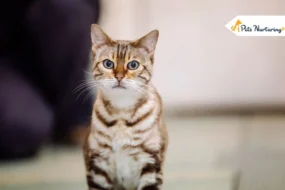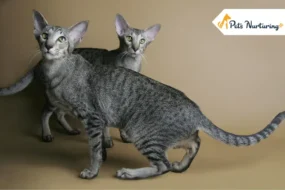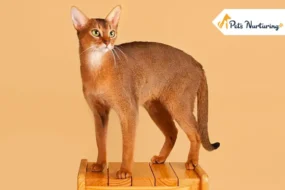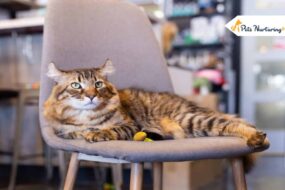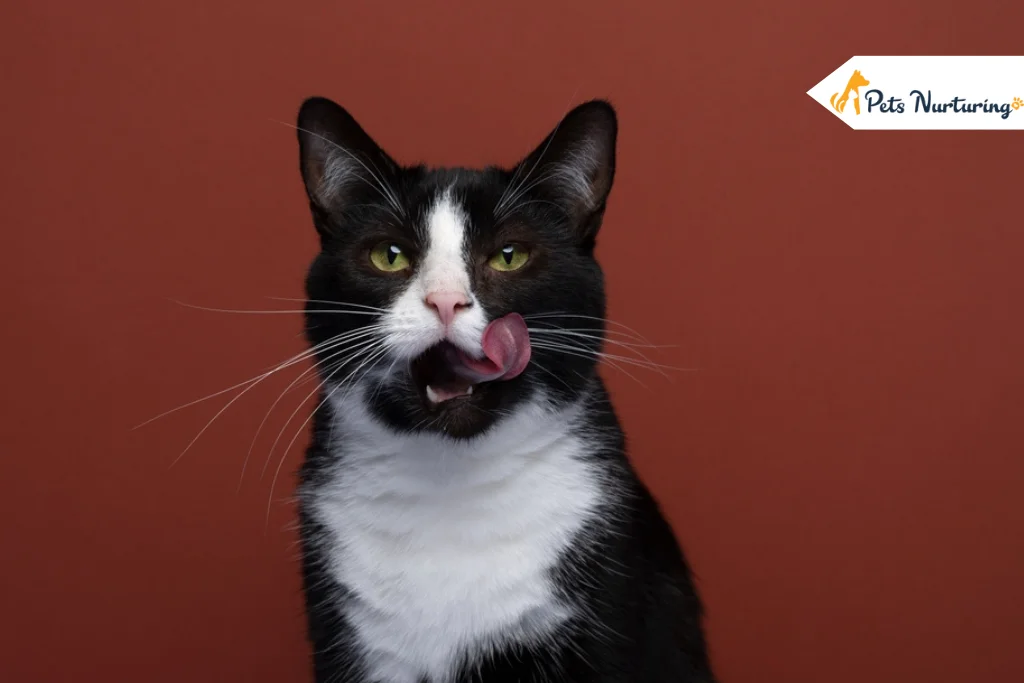
Let’s talk about the Tuxedo Cat – a classy feline with both style and personality. These cats are famous for their unique coat, resembling a black and white tuxedo. Yet, there’s more to them than meets the eye!
Tuxedo Cats are not a separate breed but a color pattern that you can see in many different cats. These felines earn their name from the stylish black and white coat that often looks like formal attire.
Also known as Tuxies, they are friendly, socially intelligent, and very playful. They have come a long way, from being worshipped in Egypt to making a place for themselves in the White House. While they may not constitute a distinct breed, various characteristics set them apart from other feline counterparts.
Keep reading if you want to know more about them.
Breed Overview
Tuxies showcase a distinct bicolor pattern, featuring bold black-and-white markings that look like men’s formal attire. The tuxedo pattern can be found in mixed breed cats as well as certain pure breeds.
Any combination of black-and-white in a piebald fashion qualifies as a tuxedo cat. The most eye-catching examples display a black body, white chest, and paws. In some cases, a black spot at the throat even resembles a stylish bow tie.
Tuxedo Cat Overview
Other Names: Tuxie, Jellicle cat, Felix cat, piebald
Height : 12 to 18 inches
Weight : 15 to 35 pounds
Coat: Short, medium, or long (depends on the breed)
Coat Color: Black and white
Temperament: Outgoing, friendly, intelligent, playful
Eye Color: Different shades of gold, blue or green
Life Span: Average 12 to 15 years
Origin: Ancient Egypt
History
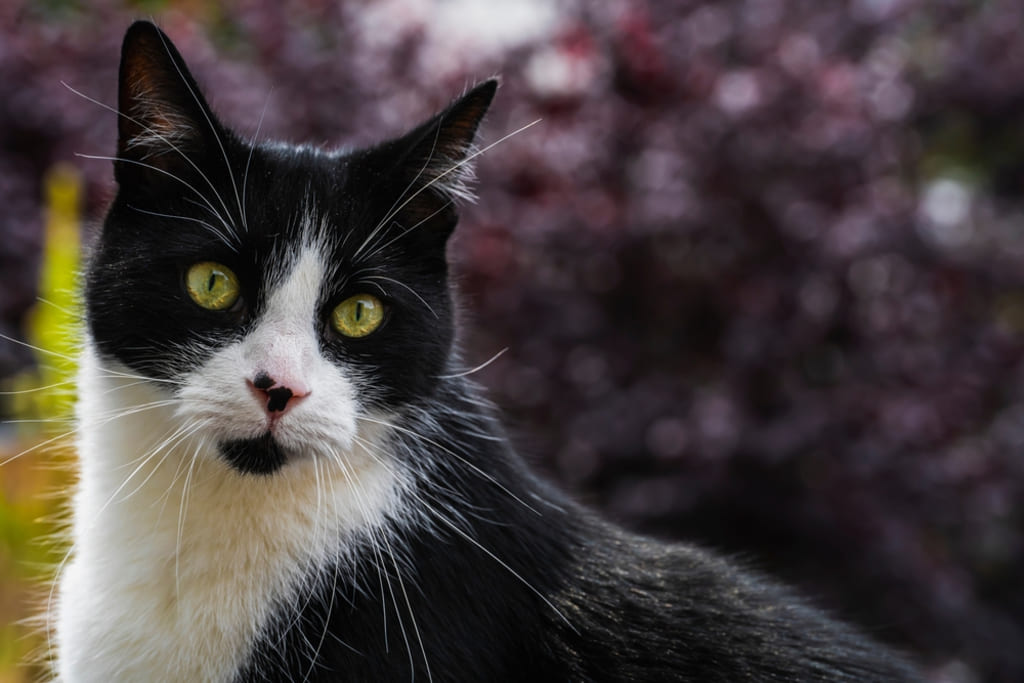
In ancient Egypt, people treated cats like they were goddesses and gods. Cats, especially tuxedo cats, were so special that, like the royal family, they were mummified as well.
They were also featured in hieroglyphics, artwork, and sculptures because the people believed that cats had some kind of “divine energy.”
It turns out that about 70% of the cats shown in Egyptian sepulchers and art were actually Tuxies.
Even after thousands of years, tuxedo cats kept their special status. They became friends with famous people like William Shakespeare, Beethoven, and Sir Isaac Newton.
Cats carry genes that create the tuxedo pattern when combined just right. Tuxies possess genes for being black, and they also carry the white spotting gene. This gene covers some parts of their body with white, blocking the black color by keeping the melanocytes, which produce color, away from those areas.
The spotting gene produces varying degrees of white spotting, ranked from 1 to 10. Tuxedo cats typically fall into the lower grades, from 1 to 4, where less white is visible.
While it’s unclear exactly when this gene combination first showed up in cats, it’s believed to go back to at least ancient Egyptian times, as bicolor cats have been found in their tombs. Tuxedo cats have also made their mark in modern popular culture. For instance:
- Felix the Cat, a character from the 1920s silent film era, was featured in cartoons, animation, and various merchandise. Even today, the Felix clock remains a cherished cat collectible.
- T.S. Eliot’s 1939 book “Old Possum’s Book of Practical Cats” referred to a group of black-and-white cats as “Jellical” cats.
- Sylvester the Cat, part of Looney Tunes, is another well-known tuxedo cat with distinctive white features.
- Socks, the First Cat during Bill Clinton’s White House administration, gained fame as a real-life tuxedo cat.
- Dr. Seuss’ 1957 classic “The Cat in the Hat” also showcased a talking tuxedo cat.
Appearance
Tuxies have a unique black and white coat with a variety of patterns, giving them a stylish look like they’re always dressed up in formal wear.
Every cat’s ideal height and weight depends on various factors, and one key factor is their breed. Since Tuxedos aren’t a specific breed, your vet will need to figure that out before suggesting the right weight range.
| Characteristic | Range |
| Height | 12 to 18 inches |
| Weight | 15 to 35 pounds |
So, what breed are Tuxedo Cats?
1. Turkish Angora
Originating from Middle Turkey, Turkish Angoras are an ancient cat breed with records dating back to the 17th century. Many recognize them for their complete white color mutation.
2. American Shorthair
Popular in North America, the American Shorthair is one of the most common cats you’ll come across if you live in the U.S.
3. Maine Coon
The Maine Coon is one of the oldest and most extensive domestic cat breeds in North America. It boasts a luxurious coat and a long, impressive tail, with variations ranging from Tortoiseshell to solid or bi-color in longhair.
4. British Shorthair
A pedigree version of the original British domesticated cat, the British Shorthair is muscular, friendly, intelligent, and independent. Their tuxedos are a bit lighter (looking gray), but the patterns are undeniably cute.
5. Scottish Fold
Known for its charming and companionable nature, the Scottish Fold is recognized by its folded ears. Due to outcrossing, this rare breed might also showcase a black and white bi-color pattern.
6. Piebald Cat
A cat with a mix of white fur and another color, resembling a Tuxedo Cat or Tabby.
| Breed | Height | Weight |
| Maine Coon | 10 to 16 inches | 10 to 25 pounds |
| Turkish Angora | 9 to 11 inches | 5 to 10 pounds |
| American Shorthair | 8 to 10 inches | 6 to 15 pounds |
| British Shorthair | 11 to 12 inches | 7 to 17 pounds |
| Piebald Cat | 12 to 18 inches | 15 to 35 pounds |
| Scottish Fold | 9 to 11 inches | 6 to 13 pounds |
According to Feline Living, the gene influencing a tuxedo cat’s coat might also be linked to their eye color. Most Tuxies have bright green, golden green, bluish green, gold, or yellowish eyes.
Coat and Color
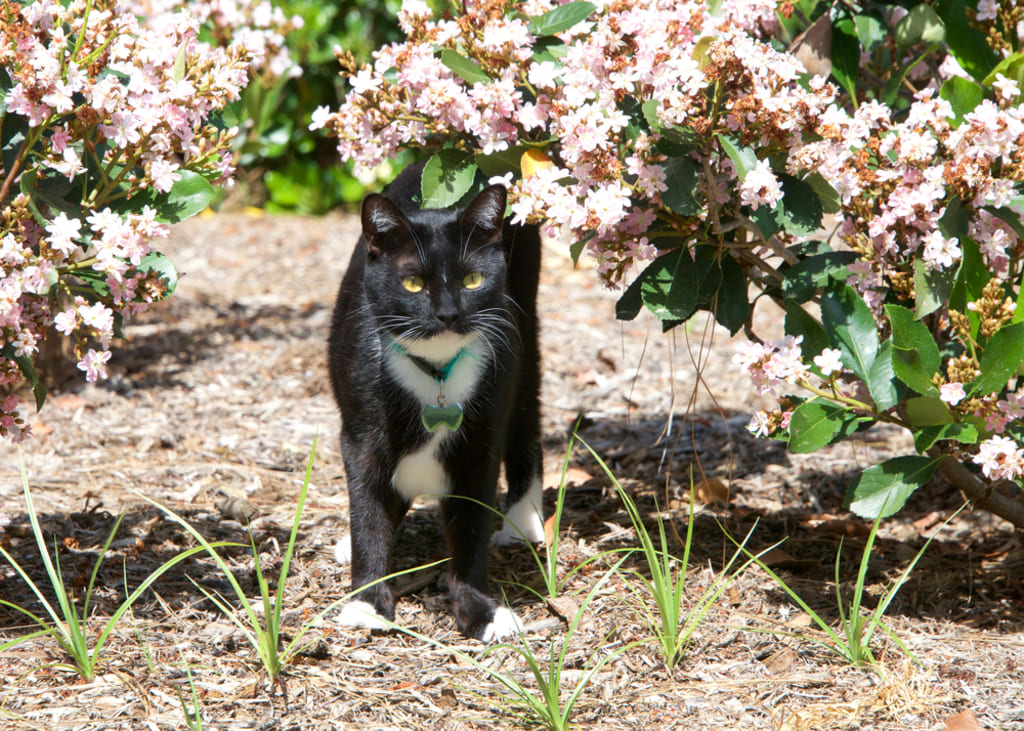
Tuxedo cats, similar to calicos, don’t belong to a specific breed. Instead, what sets them apart is their white and black coats. When we talk about Tuxie coats, it’s not just limited to black and white. A few people also assume variations with white and orange or white and gray as tuxedos.
Generally, their tummies, paws, and chests are white, and the rest of their body is orange, black, or gray, creating the appearance of a tuxedo.
The face of a tuxedo cat probably has white etchings. Since Tuxies can be different breeds, their furs can be long or short, resulting in a diverse and beloved appearance.
A unique feature of tuxedo cats is that they don’t necessarily need 2 tuxedo cat parents to have their distinctive coats. If even one parent possesses the tuxedo design, they can pass the trait on to their kittens.
Tuxies are diverse and can surprise you with their unique patterns and combinations.
1. Cap and Saddle Tuxedo
The adorable little companions have black-colored ears or heads, accompanied by a black mark shrouding the rump, tail, or some parts of the spine.
2. Mask and Mantle Tuxedo
A kitty with a black coat right from the cranium to the end of the tail, with white covering the remaining parts.
3. Van-Pattern Tuxedo
These adorable cats are mostly white, except for a black spot at the tip of the tail and the top of the head.
4. Harlequin or Magpie Tuxedo
These cats have smudges of white and black, erratically speckling their coats. A few may also have a white spot or two near their throats, resembling bowties!
5. Tuxedo and Tabby Pattern Combination
These cats sport M-like forehead markings, including a few stripes around the back, tail, eyes, and cheeks in a standard tabby imprint.
Characteristics and Temperament
Tuxedo Cats are famous for being friendly and sociable. They love to play, explore, and show affection, making them awesome companions.
Rarely will you find a grumpy tuxedo cat. These unique little felines absolutely enjoy the company of their owners and love being cherished companions.
These cats are pretty smart, too – they can figure out problems and even learn commands and tricks. Their intelligence means they’re great at interactive sports and can easily adapt to different environments.
Now, are they suitable for households?
Tuxies are perfect for family life. They’re friendly, love kids, and can handle the busyness accompanying the family. Their playful nature brings lots of fun and bonding moments for everyone.
And what about getting along with additional pets?
Yes, Tuxedo Cats usually gel well with other pets, like puppies and other kittens. They enjoy playing and hanging out with their furry friends.
Of course, every cat is distinctive, so it’s essential to introduce them properly and keep an eye on how they interact. Overall, with a good introduction and some socializing, these cats can happily join a household with multiple pets.
Every tuxedo cat has its own special personality, and it can vary because of different breeds. But in general, tuxedo cats are famous for a few key attributes:
- Cordial and outgoing
- Energetic and active
- Talkative
- Extremely intelligent
- Faithful and dog-like
- Calmed
According to All About Cats, people often see tuxedo cats as more loving than other cats, but studies don’t entirely agree with this idea.
Tuxedo cat’s existence can be dated back to Ancient Egypt, so they’ve had a ton of time to get used to humans and develop personalities as unique as their skin markings.
Health and Nutrition

Tuxedo Cats are generally healthy, but you need to follow the right diet plan to keep them in the best health condition.
Feed your tuxedo cat the same way you would for any cat of its breed. Despite their dressed-up appearance, your cat doesn’t require fancy meals like caviar.
The amount of food you give them should be based on factors like their health, weight, age, preferences, and nutritional needs. Giving them the right kind of food ensures they stay healthy.
It’s generally recommended to give them wet food, but you can also offer dry food for snacking. Talk to your vet about your cat’s specific needs, especially if they have diabetes, are overweight, or are getting on in years. Always make sure your cat has access to fresh and clean water.
When you’re bringing home a Tuxedo kitten, it’s essential to start them off right by providing the right amount of food.
Here’s a quick guide on how much to feed your Tuxie based on their age:
6-12 weeks old
- Meals per day: 4
- Amount of wet food per meal: 35-55g
- Amount of dry food per meal: 4-7g
2-6 months old
- Meals per day: 3
- Amount of wet food per meal: 60-70g
- Amount of dry food per meal: 6-8g
6-12 months old
- Meals per day: 2
- Amount of wet food per meal: 80-110g
- Amount of dry food per meal: 10-18g
Common Health Problems
tuxedo cats can belong to various breeds, and certain breeds may have a higher susceptibility to specific diseases. The ASPCA points out common cat diseases that all cat owners should be aware of:
1. Kidney Disease
As expected in more aging cats, kidney disease can usher to organ failure. Look out for signs like increased thirst, urination, weight loss, decreased appetite, and vomiting. Regular blood tests can help screen for and predict kidney issues.
2. Hyperthyroidism
Overactive thyroid glands are prevalent in cats, causing symptoms like weight loss, increased vocalization, excessive hunger, and sometimes vomiting or diarrhea. A blood test can diagnose this condition.
3. Cancer
Keep an eye on older cats for any unusual lumps or skin changes. Lymphoma is a frequent type of cancer in cats.
4. Diabetes
Cats who are older, male, and overweight are more prone to diabetes. Regular monitoring is essential.
5. Feline Leukemia Virus
FeLV damages the immune system, making cats more vulnerable to blood cancer. There’s a vaccine available to reduce the risk.
6. Feline Immunodeficiency Virus (FIV)
This virus spreads through cat fights with deep bites. Keeping your cat indoors can prevent such territorial fights.
7. Obesity
Feeding too much and not getting enough training can cause obesity in cats. This increases the hazard of additional health issues like joint issues and diabetes.
8. Hairballs
When long hair Tuxedo Cats are grooming themselves, they might swallow hair, forming hairballs in their belly. While mostly benign, they can sometimes cause blockages, requiring attention from the vet.
9. Ticks and Fleas
Parasites such as ticks and fleas can cause distress and possible health problems, including skin ailments and diseases transmitted by ticks. Regular prevention is essential.
Being aware of these common cat diseases and staying vigilant for any unusual signs is crucial for ensuring your tuxedo cat’s well-being. Regular check-ups and discussions with your vet can help catch and address potential issues early on.
Behavior and Training

Tuxedo cats can have different personalities because they come from various breeds. Their individual temperament is influenced by both their genes and the environment they grow up in.
These cats are incredibly smart, displaying a feline intelligence that owners find remarkable. Their skills go beyond training and sociability.
These affectionate felines love cuddling, whether curled up beside you or rubbing their smooth bodies against your legs. Kneading, a common cat behavior, is no exception for tuxedo cats.
Training cats isn’t exactly like training dogs, but Tuxedo Cats, being quite smart, can learn tricks and get the hang of using a litter box.
Litter training is usually very easy, especially if you adopted your cat from a shelter or a breeder, as they’re probably already familiar with the whole litter box routine. As Tuxedo Cats are very smart, you can easily teach them tricks.
Exercise Needs
Tuxedo Cats are lively and enjoy regular play sessions. Investing in various cat toys, scratching posts, and cat trees is a great way to keep them entertained and ensure they get the exercise they need. If your cat ventures outdoors, having a secure catio or a safe environment helps them stay active and protected.
Make sure your cat has lots of playtime with toys to chase and provide safe spots for them to relax. Since cats love their beauty sleep, offer a cozy bed and create comfy lounging spots throughout your living area for your cat to enjoy.
Grooming Needs

Cats usually handle their grooming, but Tuxedo Cats with longer coats might need a bit more attention. For instance, if you have a Maine Coon, regular brushing helps them maintain a sleek appearance and prevents any mats or tangles.
1. Skin Care
Your cat can suffer from skin infections and tick-borne diseases, so make sure you regularly take them to a vet. It is also advisable to use good quality cat shampoo and bathe them from time to time to avoid any infection.
2. Coat Care
While grooming, cats may swallow hair, forming harmless hairballs in their stomach. To avoid this, you need to brush their coat twice or thrice a week, especially if you have a long hair Tuxedo Cat.
3. Ear Care
Ear infections in cats, caused by mites, bacteria, allergies, or underlying health issues, can be prevented with regular ear checks and cleaning.
4. Nail Trim
Trim your cat’s nails every two to three weeks, and make sure to provide a scratching post.
5. Dental Care
Neglecting dental care can lead to gum disease and other oral health problems in cats. Regularly brushing your cat’s teeth and scheduling veterinary dental check-ups are crucial for preventing these issues.
Are Tuxedo Cats Hypoallergenic?
Tuxedos aren’t hypoallergenic since they have a protein that can trigger allergies. While no cat is entirely hypoallergenic, some breeds, like the Sphynx and Devon Rex, may be less likely to trigger allergies due to their lower production of dander and saliva.
If you’re thinking about bringing a Tuxedo Cat into your home, it’s essential to know their specific breed to gauge the potential for allergens and make an informed decision. It is best to choose a hypoallergenic cat to avoid allergies.
Price
Tuxedo kittens for sale can be anywhere from $500 to $2,000. The actual price depends on the specific breed, type of breeder, age of the kitten, and the location. A premium purebred Tuxedo Cat for sale will cost you more.
However, you can save money with Tuxedo Cat adoption from your local shelter or pound. Tuxedo cats are abundant in these places, offering you the chance to find a wonderful companion that suits your family.
Life Span
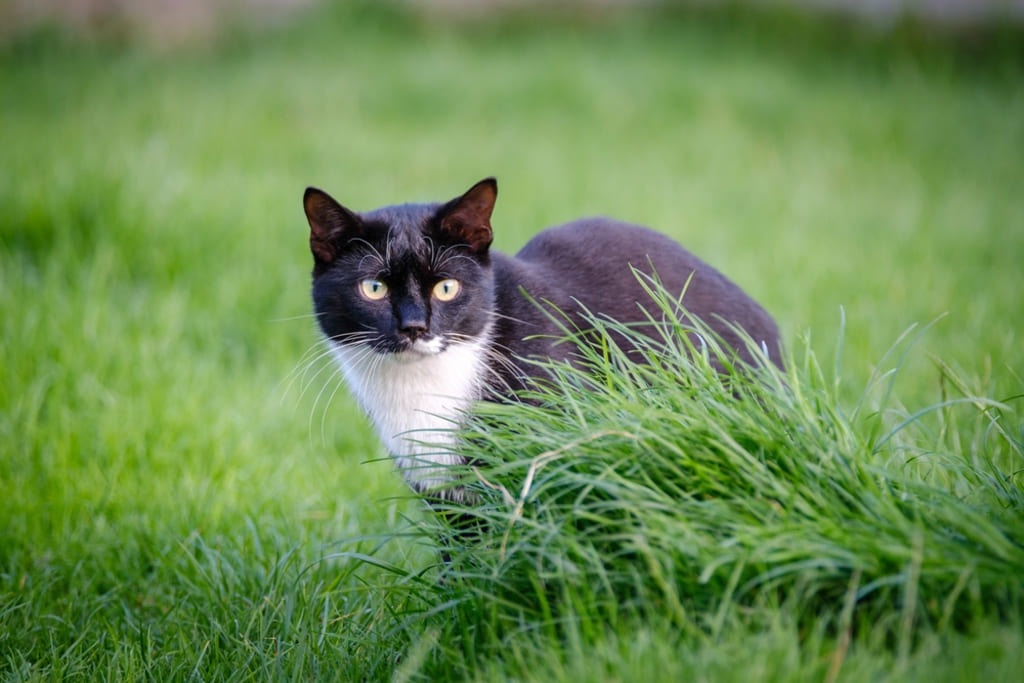
The lifespan of a tuxedo cat depends on its breed. Generally, healthy indoor cats can live to be 15 years or even older. On the other hand, outdoor cats have a shorter average lifespan, ranging from two to five years, according to information from Fetch by WebMD. By following proper feeding guidelines and taking your cat for regular vet visits, you can increase their lifespan.
FAQs
You can search online to get information about local breeders selling a Tuxedo Cat.
Tuxedo Cats can be a variety of breeds like Turkish Angora, Maine Coon, British Shorthair, or American Shorthair.
No, females can also have the Tuxedo coat color.
Tuxedo cats with black and white color combination are quite common.
Conclusion
This is all you need to know about the Tuxedo cat breed. They make great pets because of their loving personality. Having a Tuxedo Cat is a pleasant adventure full of companionship and fun. These cats are famous for their cordial and friendly disposition, their amazing build, and their lively spirit.
Whether you’re a single soul living in a flat or part of a big household, this cat can wonderfully improve your home.However, when looking for Tuxedo kittens for sale, be sure to select the right breeder. Verify their health certificates to ensure the cats are free from any genetic conditions.
Explore Further:








